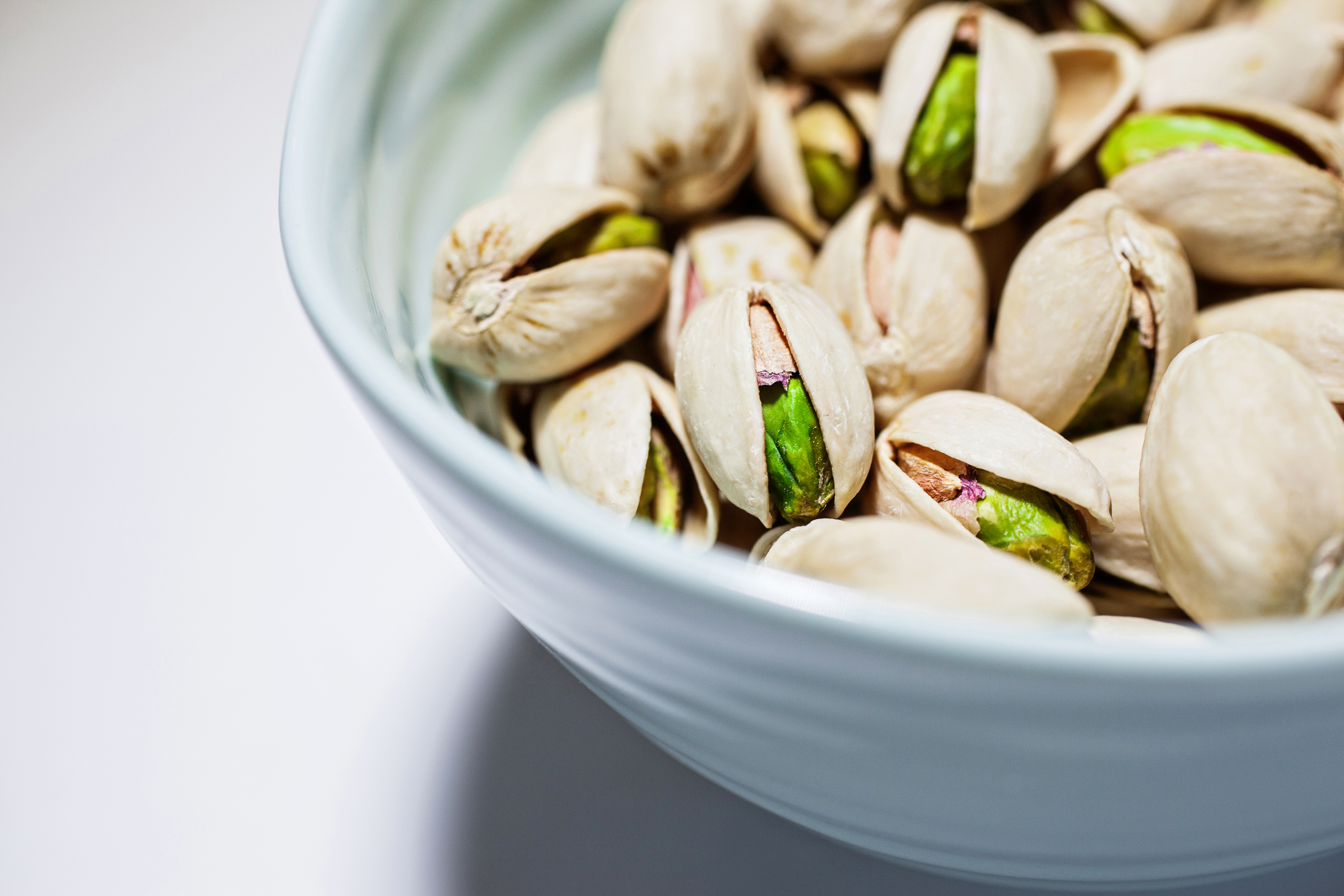Pistachio Extracts Found to Have Anti-Viral, and Anti-Biotic Power
Antimicrobial Effects of U.S. Pistachio Extracts Shown to Prevent Growth of Bacteria and Viruses
Initial findings point to extracts’ potential role in the development of novel medical treatments
Once just a snack, pistachios possess extracts that have been shown to stop the growth of Staphylococcus aureus, MRSA, Listeria and Herpes simplex virus (HSV-1) — important findings amid growing antibiotics resistance and the increased need for new medical treatments.
In a study published this month in Plants1, researchers at the University of Messina in Italy discovered that polyphenols, health protective compounds found in plant foods, from pistachios grown in the United States have antiviral effects on HSV-1 and can, at their highest concentration, result in the complete reduction of the virus in lab settings.
Given these results, researchers concluded that pistachio extracts could become great candidates for the development of novel topical or oral drug formulations for the treatment of HSV-1 infections either alone or in combination with standard antiviral therapies.
Previously, University of Messina researchers and researchers from the Institute of Food Research in Norwich, UK, also found that polyphenol-rich extracts from pistachios have a strong bactericidal effect against Gram positive bacteria, including many clinical strains of the disease-causing Staphylococcus Aureus, MRSA strains and Listeria monocytogenes2,3, which could prove helpful in food safety applications or as a topical treatment for S. aureus (MRSA).
Both Staphylococcus aureus and methicillin-resistant S. aureus (MRSA) are responsible for a range of skin, respiratory and bone joint infections, endocarditis, bacteremia and toxic shock syndrome. HSV-1 causes oral herpes and is generally responsible for cold sores and fever blisters around the mouth and on the face.
The Plants study highlighted that cultures were infected with the HSV-1 virus and treated with different concentrations of pistachio extract. The highest concentration of the extract resulted in the total reduction of the virus. In earlier studies, researchers prepared polyphenol rich extracts from roasted and raw pistachios. These extracts were tested on a number of bacterial cultures to determine their bactericidal strength. Staphylococcus aureus and L. monocytogenes were the most susceptible strains.
“Pistachio extracts could provide a novel topical or oral treatment against HSV-1 infections (Herpes simplex), as well as a novel strategy to overcome problems related to drug-resistant strains,” said University of Messina’s, Dr. Giuseppina Mandalari. “Researchers are optimistic that the bactericidal activity of pistachio extracts could be used to help control the growth of some microorganisms in foods potentially leading to improved food safety and as an application for the topical treatment of Staph. aureus.”
Further studies are needed to confirm that results from recent studies can be translated in a clinical setting with humans, and while this research continues to explore the potential for concentrated pistachio extracts in pharmaceutical applications, snacking on whole pistachios can make a beneficial contribution to health, since pistachios are high in copper and manganese, and a source of selenium, zinc, riboflavin and vitamin E, which contribute to the protection of cells from oxidative stress. Pistachios are also high in vitamin B6 and a source of folate and iron which contribute to normal function of the immune system.
Traditional medicines based mostly on medicinal plants have been used for the treatment of various diseases by mankind for centuries, but plants can also be rich sources of biologically active compounds. The antibacterial properties of plant-derived compounds continue to be explored, mainly in view of increased antibiotic resistance both in community-acquired infections and those acquired in hospitals and healthcare settings. As more disease-causing bacteria become resistant to usual treatments, researchers will continue to look to new sources for medicines.









